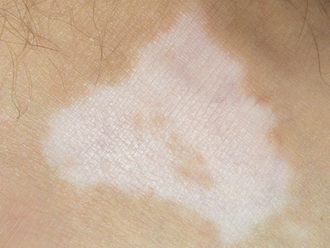
Jerusalem continues to struggle against the occupation on many fronts, especially the Palestinian sector, which has been marginalised and is slowly being Judaised. However, a new initiative — Nablus Road Open Days — aims to reclaim the ground lost in this struggle.
Nablus Road Open days was organised by the Arab Hotel Association in association with the America House in May and the mix of cultural and arts events attracted a motley group of tourists.
I meet Raed Saadeh, vice-chairman of the Arab Hotel Association, at the Jerusalem Hotel, which has been owned by the Saadeh family since 1960. The hotel is a stone’s throw from the iconic Damascus Gate, leading into the Old City. Its restaurant overlooks the busy bus station, with commuters traversing ancient streets.
“Since 2000 there has been a major decline: out of 40 hotels, we lost 15 — one-third! Similarly, souvenir shops, artisans and handicrafts have disappeared, and cultural organisations have closed down. The economy of the city is deteriorating, mainly because of the siege. The Wall is a double-edged sword — on one hand, it prevents people from the West Bank from entering the city and on the other, it forces people from Occupied Jerusalem to meet their families and friends outside the city,” Saadeh says.
“The city’s pilgrimage market suffers from negative perceptions as well as lack of differentiation. We and the Israelis sell the same products but they have better resources and management. Where they succeed we lose.”
|
But Saadeh is hopeful. “Jerusalem remains important as a central city in the world. Almost half of the world sings for [Occupied] Jerusalem when young; listens to stories told by the adherents of the three monotheistic faiths. The city has many secrets, it has many layers of civilisations and great depths of culture and heritage.
“At the same time, the city has a number of active organisations, not necessarily linked to tourism, but tourism is the competitive driver. It does not have any other economic sector that can position and open it internationally in terms of development. We speak about including cultural heritage as an important component to structure this identity and demographic as well as cultural diversity at a unique Islamic and Christian level. We have to explore the richness of [Occupied] Jerusalem and re-invent the city’s tourism portfolio from pilgrimage-based to culture-based as well.”
Come to think of it, even Saudi Arabia is now thinking on the same lines.
Saadeh says, “Our main strategy is networking. The city has limitations as a result of Israeli policies and Palestinian Authority’s limited access to it. The only option for the city to move forward is to find ways to work together, uniting culture and tourism by networking, thus adding value and differentiation.”
This new thinking has manifested in the idea of converting certain arterial streets — both outside and inside the Old City — into attractive touristic destinations. “We have started working on a number of streets. It is an ongoing project in Al Zahra Street and the Old City with streets that have significant attractions, that amplify the cultural depths of the city,” he says.
“Packaging the city into themes, such as Sufi community, women’s architecture, European presence, social seasons, labour day as well as Mother’s Day” are some of the other ideas, Saadeh says.
Saadeh and his team have taken a community-based approach in order to engage the community and place it first in the process.
“Historically Nablus was the heart of Jerusalem, but Israelis have managed to make the western side of the city the centre. We are reclaiming the heart of our city, the pulsating body with its bloodline, and showcasing its richness in opening all organisations to the public. It is truly a unique brand in which all organisations are packaged as one,” he says.
The logo for Nablus Road portrays the street as a destination. Saadeh highlights some special places here. “Across from here is the Garden Tomb which 250,000 people visit every year. We believe that Nablus Street should benefit from their presence. There is Ecole Biblique, the best library in the world, the Sa’ad-wa-Sa’id Mosque built in the early 20th century, The British Council, which represents British cultural exchange with Palestinian culture, and the Dar Al Tifel Al Arabi Museum.” The road is indeed a rich mosaic of historical, religious and cultural significance.
During the Nablus Road Open Days festival, exhibitions by Palestinian artists, women artisans, music- and folklore-based events and an exhibition commemorating Shakespeare’s 400th death anniversary were organised. Each organisation was involved in this collaborative exercise, hosting an activity. The entire festival was targeted at children, youth and families, both local and from abroad.
“We hope to continue this networking initiative and most importantly, we wish to connect [Occupied] Jerusalem with the new logo of a wise old man in the shape of the popular bread, ‘kaek’. We call him ‘Umo Kaek’, meaning Uncle Kaek,” Saadeh says. “Bilateral activities with other organisations will continue with ‘open doors’ to the public and we shall think of other events as we progress.”
Humanising Occupied Jerusalem in this way adds a distinctive Palestinian flavour to it and differentiates it from the other side.
Saadeh says that international tourists do not spend more than 10 per cent in the Palestinian part of the occupied city, which is a cause for concern that these collaborative initiatives intend to redress.
Walking on Nablus Road, with Occupied Jerusalem’s holy sites and historic monuments in the vicinity, wonderful secrets are revealed — magical gardens and monasteries, wondrous bell towers and mosque minarets, hotels, shops and restaurants and cultural and entertaining activities, all suffusing a flavour of the worlds that are found only here.
Rafique Gangat, author of “Ye Shall Bowl on Grass”, is based in Occupied Jerusalem.













